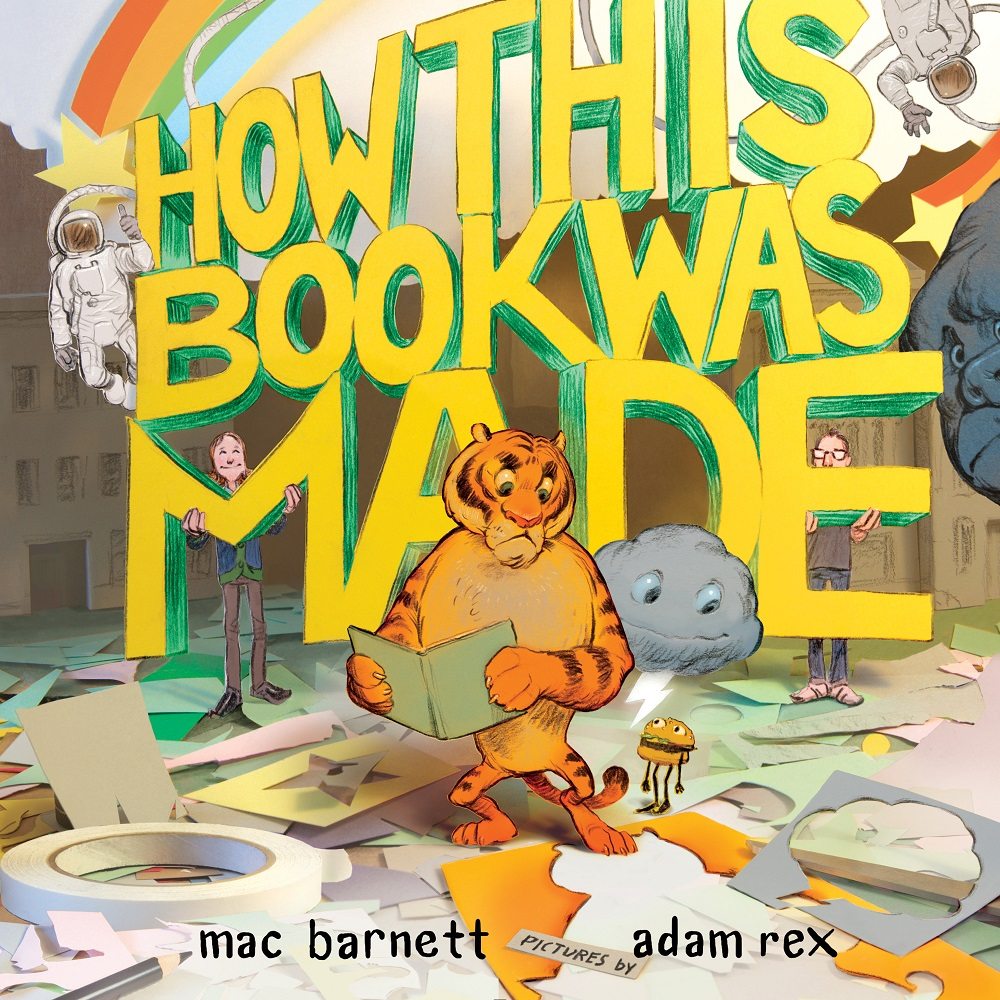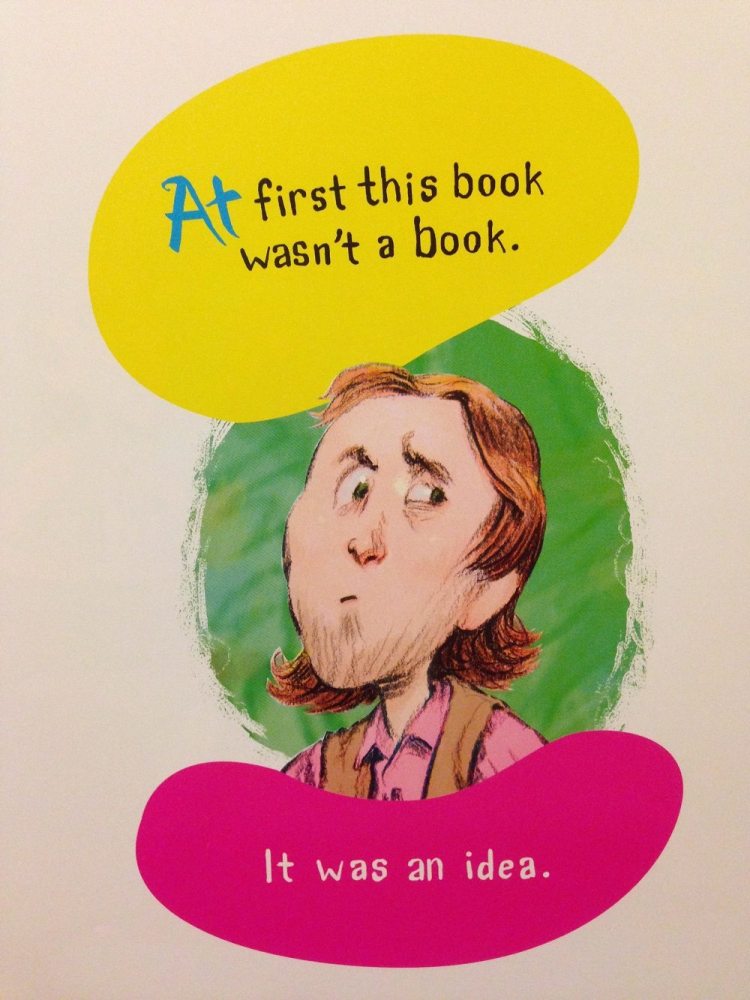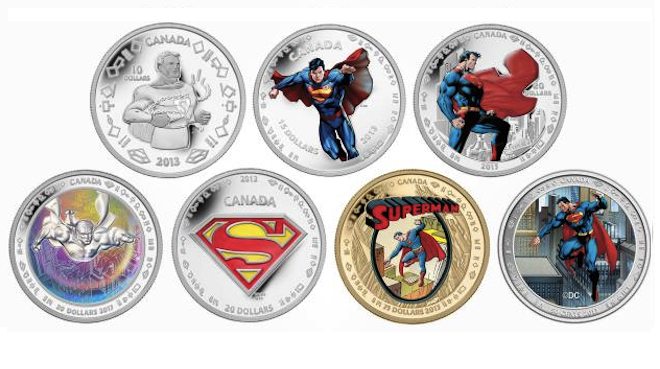I read a lot of children’s picture books. Like, a lot. And it’s not often that one comes along and really just steals my heart at first glance. But How This Book Was Made, by award-winning duo Mac Barnett and Adam Rex, did just that.
Full disclosure: the full-time gig that pays the bills when I’m not writing for GeekDad (and elsewhere) is in publishing. I work as a book editor, so I’m already predisposed to love books about books. And books about the writing and editing process? Books that break the fourth wall, go meta, and pull back the curtain on the actual process of publishing a book? And books that feature an editor as a character? Well, this might be actually the first book that checks all those boxes, but it’s a guaranteed hit in my book.
What I love about How This Book Was Made is that it’s a creative call to arms, but not in the traditional sense. It inspires kids to write and create, but at the same time, it reveals the mundane magic behind how books are actually made.
The idea for the book came from the most logical of all places: kids. Mac explains that it’s a question he gets asked a lot by kids and when he speaks at schools. How does a book get made? What started out as a relatively dry whiteboard presentation quickly took a left turn and involved pirates and the Bermuda Triangle. And over the years, as kids kept asking the question, his story got longer and more elaborate.
Then, one day, a girl told Barnett that she had a story idea. Thinking it would be something like Spider-Man and Spongebob Battle to the Death, he was surprised to hear her suggest that he turn that story–his epic tale of a how a book was made–into a book. Out of the mouths of babes.
And we’re all the richer for that idea. How This Book Was Made casts Barnett and Rex as characters in their own book and traces the birth of a book from an idea in the author’s mind to an editor with unreasonable demands to an illustrator who brings the words to life to a printer in Malaysia on the other side of the world… and all of the adventures in between.

I asked Adam about his artistic approach on this book, since each of his books seems to employ different techniques. The different textures and media used here really contribute to the idea of how books are made, so I was curious about how long it generally takes him to come up with the look and feel of a new book.
“I wanted to do something new, so I ended up making these paper dioramas that had depth to them. I would make a layer of jungle, then another layer of jungle on top of that, and then another layer that has Mac and a tiger arm wrestling in front of that. And then I would photograph those dioramas and bring them into Photoshop and tint them in various ways. That ended up being the method on this one. And it took a couple years for me to figure that out because I had the luxury of having a couple years before I was able to start on the book. If I had started working on the book as soon as the contracts were dry, I probably wouldn’t have arrived at this particular way of working.”
Since Mac and Adam are actually characters in the book, was Mac happy with the way Adam made him look?
“Yes. Yes, I am. I think that, always when I’m doing a picture book, I feel like the text is architecture for the illustrator. I’m building something that’s incomplete, and I’m giving it to someone else to finish. And I obviously care about the story and love it and want it to go well, but I also like that moment when I give up control. It’s interesting: the Adam that’s in this story is a version of Adam. He had no say over how he’s written, how he talks, what his personality is. So, likewise, I’m excited to see what kind of person Adam will make me.”
And according to Adam, “There’s a good example of the collaborative nature of picture books that goes along with that. In How This Book Was Made, there’s a page right after the manuscript has finally come to me, the artist. It says, ‘It took the illustrator a very long time to draw all the pictures for this book. I don’t know what he was doing that whole time, but he must have been working very hard.’ And I think that’s all it really said in the text. He left it up to me to decide what I was going to show myself doing… with the understanding that, of course, I’m not going to show myself working very hard.”
Asked about the ingredients to their magic sauce, Adam said that from the moment they first met, they had a “scary synchronicity” to what they were both working on. “For a while there, it seemed like every single idea I brought up for a book, Mac had a similar idea in the works. Anytime I would say something like, ‘I’ve really been thinking a lot about a Bigfoot story,’ Mac would tell me about the 10 pages of his Bigfoot story he’d already written. I think we work well together as author and illustrator because we’re lucky enough to have almost identical sensibilities.”
This isn’t the first time that Mac has tried to stretch the boundaries of his storytelling. He actually did a TEDx talk about the power of writing that escapes the page and breaks the fourth wall to an extent. How This Book Was Made certainly does that. However, this is a relatively abstract form of writing that requires readers to wrap their head around it a bit, especially kids. I was curious why Mac and Adam thought this was still so compelling for young readers.
Mac: “I think it’s because that’s how fiction works when you’re a kid. That’s a natural place your brain goes. There are so many fictions in kids’ lives: fictions they make up themselves and those that are imposed upon them that they just take as real. Daily life is like that as a child–the stories that are in your head are real. For example, when I was a kid, I really thought it was possible to find a door that would take me to a place like Narnia. I knew that wasn’t possible in the same way as I could have a bowl of Lucky Charms for breakfast, but I still thought it was really actually possible–not just something in a book. And that liminal space–kids do go there. It’s adults who try to make it understandable and try to rationalize it with words.”
Adam: “The fourth wall is something you build as you get older. It’s not something that’s there from the beginning. Kids don’t expect that they shouldn’t be able to interact with the stories that they read. When I show a book like How This Book Was Made to adults, they’re momentarily taken aback and think, ‘Oh! The author is speaking to me!’ But kids don’t even bat an eye. They expect this to be part of the storytelling.
How This Book Was Made is available now from Disney-Hyperion books, and it comes with our highest recommendation.






